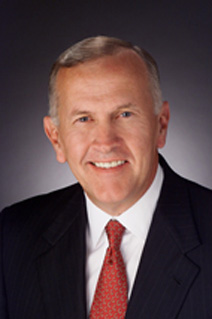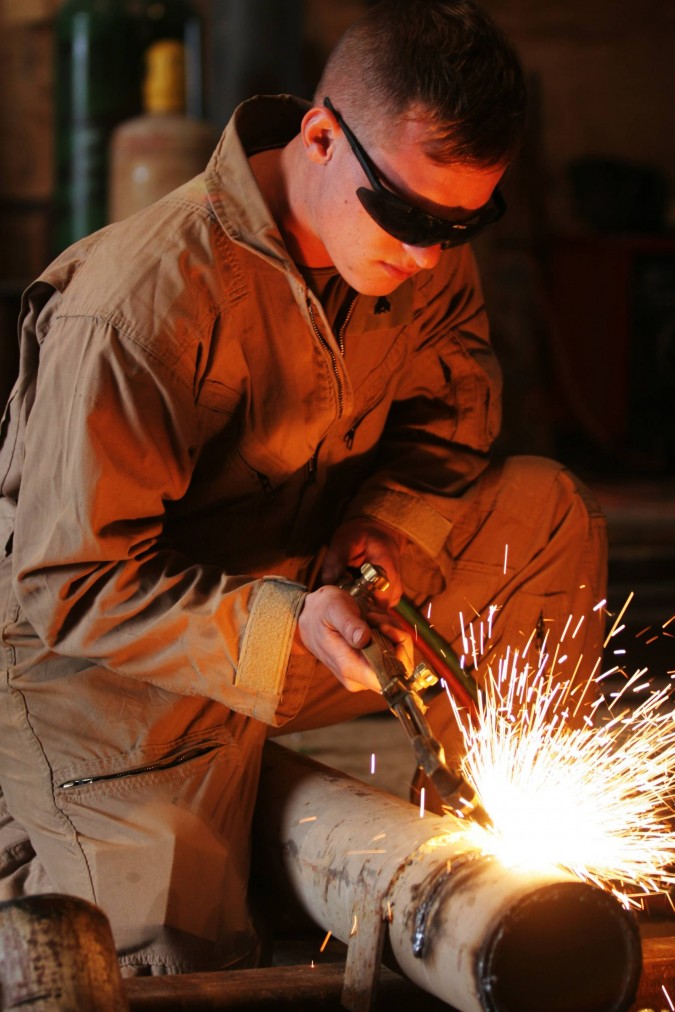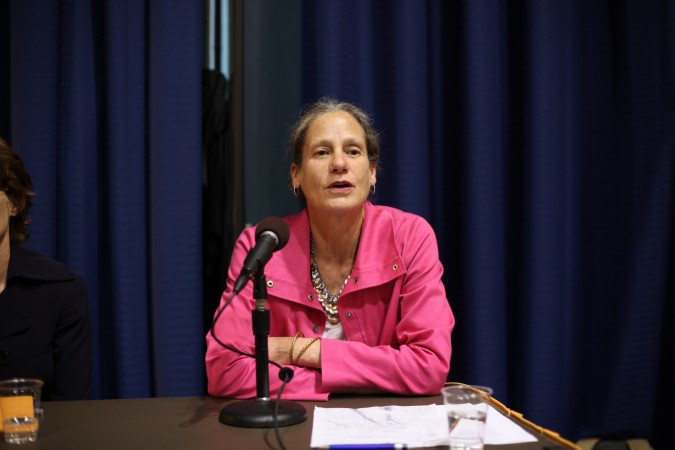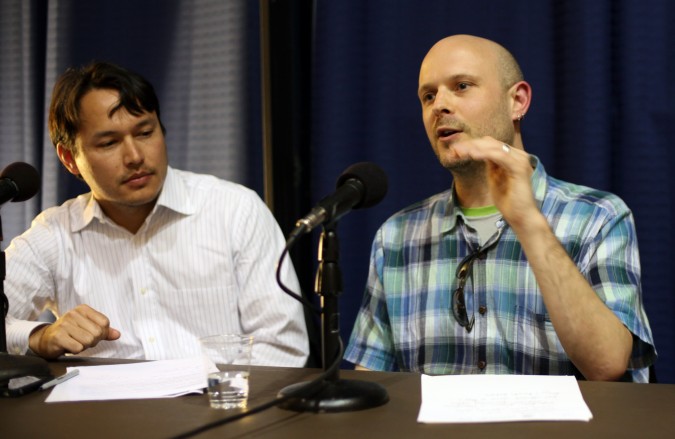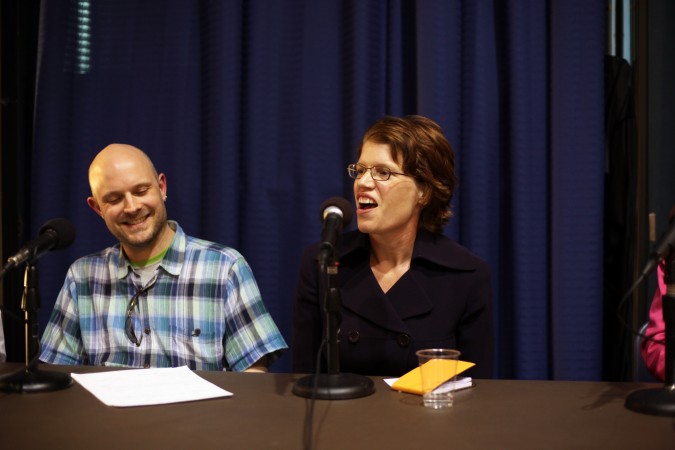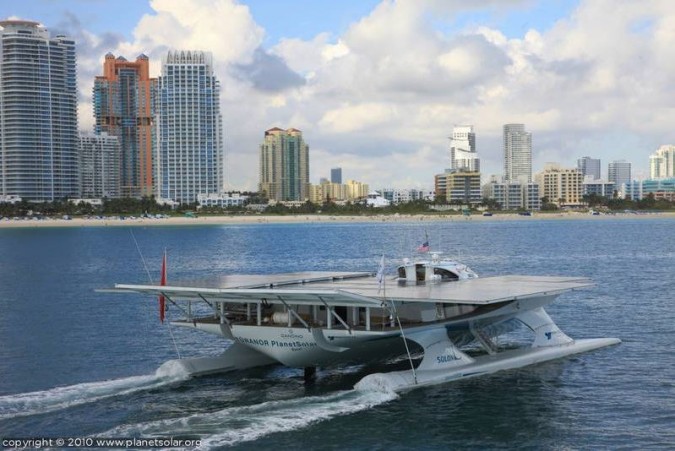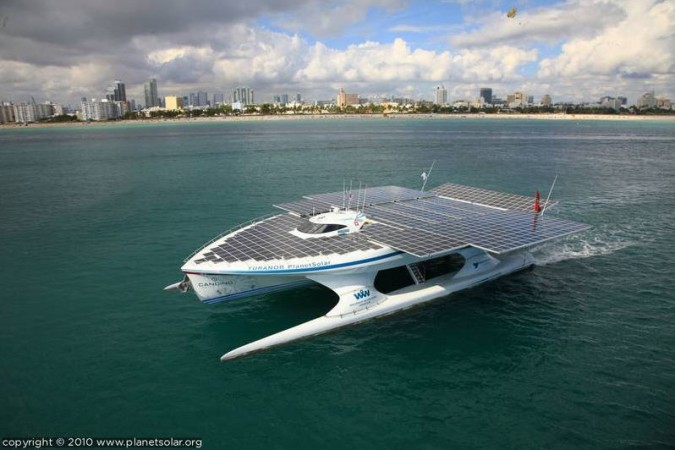Archive for April, 2011
I arrived at my grandmother’s house in Tigard, Oregon
My grandmother Elsie Battaglia is 99 years old.
Starting on April 1, 2011, she hasn’t been feeling well, and she sounds extremely tired on the phone. She’s had an array of tests completed by her doctors, and they can find nothing wrong. In fact, her doctor said she is ‘remarkably healthy’ and that there’s no reason for her to be at the hospital.
Even so, she sounds so lethargic on the phone that I am concerned. She is sleeping 12 hours a day, which is quite unusual for her.
I decided to skip the TiG aluminum welding class I had signed up for last evening at TechShop in Menlo Park, California.
Instead, I began driving my car north from San Francisco, California to Tigard, Oregon, which is a suburb of Portland, Oregon.
Note that I never sold my BMW even though I wrote a post in March 2010 advertising it. I didn’t get an offer over the lowest blue book value, so I had a change of heart, as I really love my car. I had wanted to sell it in order to buy a Volkswagon Golf TDI, which gets far better mileage. But Golf TDIs are in short supply and are very expensive on the used market. The new ones can’t run on biodiesel, so they were out of the question.
The drive to my grandmother’s house is 630 mile drive, which is far too much for me to drive in one day, particularly since I drive precisely at the speed limit to save fuel. I drove about 300 miles last evening and stayed at the Sis-Q-Inn Motel at 1825 Shastina Drive in Weed, California.
The drive today was tiring, as I hit Friday afternoon rush hour traffic as I approached Tigard.
I arrived at Elsie’s house around 5pm.
She was reclining in her brand new power activated recliner, similar to this one, that can nearly ‘stand up’ to help her get out of her chair easily. I had never seen such a chair in operation in person, and I was impressed. I saw ads on TV for such chairs when I was a kid — I didn’t understand then how critical a chair could be to someone.
Elsie’s dear friend Char, who has known my grandmother for some 40 years, came over this evening and made dinner for Elsie, Claudia and me. Claudia is Elsie’s friend who lives with her and helps her out. Claudia is an absolute delight, and I am so thankful she is here. She tells Elsie she loves her several times a day.
I am very close to my grandmother. I introduced my last girlfriend to Elsie before I introduced her to my parents.
Elsie got married when she was 16, and had my father when she was 18. Her husband died of a heart defect when she was 23. This was in about 1935, when the country was still in the Great Depression. Her husband’s father owned an apartment building in Portland, and Elsie went to work for him collecting the rent from mostly broke tenants. She describes the work as a tough assignment, but she was persistent and mostly succeeded. The apartment building is still there, and my father and brother went to visit it within the last two years.
I don’t know how long I am going to stay here in Tigard, which is why I drove. I have my laptop with me, and my grandmother has a fast WiFi connection, so I can work effectively from here.
University of Chicago Laboratory Schools alumni gathering in San Francisco
Last evening, April 6, 2011, I attended a get together for friends and alumni of University of Chicago Laboratory Schools. There were people there that graduated from Lab in 1960. This was not a class specific gathering, so many years were represented among the approximately 75 guests. I was the only attendee from my class, sadly. The last time I attended one of these gatherings, my friend and classmate Harry Bims was there. Bims is a fellow tech entrepreneur, which gave us even more to talk about.
The venue for the event last evening was the elegant home of class of ’75 alum Pamela J. Joyner in San Francisco, California. Thank you to Joyner and her husband Fred Giuffrida for opening their home.
David W. Magill, the Director of Lab School, spent some time telling the group about the changes underway on campus. The most striking news is that since the University of Chicago is growing so rapidly, there are no longer enough spots at Lab School to accomodate the children of University professors.
University of Chicago recruits top professors by promising them that their kids can attend Lab School. Some children of new professors are now placed on the Lab School waiting list, which Magill said has not ingratiated him with the deans he has to deliver the bad news to. As a result, Lab School is physically increasing the size of its facilities. The University gave them an unused building close by the current Lab campus. This unused building is now being demolished. In its place will be a stunning early childhood campus for nursery school through 2nd grade students. The space on the primary campus now used for those students will be recaptured such that the primary campus will be able to accomodate increasing the high school class size by about 100 students. This will mean that all University affiliated students will be guaranteed a spot, which should make the department deans happy.
The Laboratory Schools contributed more to what I’ve accomplished in life than any other single contributor. I am grateful I am the son of a University of Chicago professor, which enabled me to attend the Lab Schools.
Magill and I talked at length. I had met him at the last such gathering I attended, about 6 years ago. I was pleased to learn from Magill that middle school students are taught cooking and must know how to cook a meal before they can graduate from 8th grade. This was not a requirement when I was a student there. The only hard requirement was that we all had to know how to swim.
When I heard there is no more general shop class, Magill said it was impossible to find a suitable replacement teacher after the long time teacher retired, so they abandoned the program. I expressed my extreme unhappiness about this sad condition. He said they have plans to add wood shop, which is a great start. But I remember vividly using a sheet metal brake to bend sheet metal into a tool box, which I still use. That’s not part of what I consider wood shop, but it was an important part of my education. The sheet metal brake had a material width capacity of 8 feet — something noteworthy to me now because the brake at TechShop can only accommodate 4 foot wide material, and I need a brake to bend 5 foot wide material, since my RTS bus conversion is built in 5 foot wide modules. It’s been a while since I was in middle school, but I can remember that sheet metal brake like I saw it last month.
Had I not had experience with quite a few different wood and metal working tools in middle school, I doubt I would now be a member of TechShop. I doubt I would have complete confidence I can create a super green bus conversion. I doubt I would be considering starting a green housing venture.
Teaching students to cook and to build things are critcial skills, and I hope Lab School expands its teaching in these areas as quickly as practical given its many other priorities.
Finally, I was fortunate to meet Beth Wittbrodt, Director of the Lab+ Campaign. The Lab+ Campaign is raising money for the early childhood campus that will allow the entire school to expand in size. Wittbrodt sought my opinion about how to reach out to alumni most effectively. I gave her my best thinking on the subject, and I found her to be quite impressive and thoughtful. Her first job after school was to personally author 1/3rd of an almanac several inches thick published by one of the most well known publishers in the country. She was 26.
I learned oxyacetylene welding and cutting last week at TechShop
I took a class on April 2, 2011 at TechShop in Menlo Park, California to learn oxyacetylene welding and cutting.
I butt welded two pieces of carbon steel together. I only got to try this once, as there were 2 other students and limited time. Liisa, the instructor, gave me millimeter-by-millimeter instruction as I was welding. She’s a good teacher because after the welded steel cooled, we put it into a bench vise and tried to snap apart the weld by banging it hard with a mallet.
It didn’t snap — instead, the metal bent 90 degrees just like it would have if there had been a single piece of steel in the vise. While it wasn’t a pretty weld, it did seem to hold well.
I found oxyacetylene welding to be easier than TiG welding, which I also learned at TechShop, on January 30, 2011.
The really exciting part of the class, however, was learning to cut steel with the torch. On my first try, I cut 3/8″ thick plate steel like it was Jello brand gelatin.
Sadly, one can cut only carbon steel with an oxyacetylene torch — stainless steel and aluminum won’t cut. You can melt a crude break in the metal, but that’s not the same as what happens when properly fuel cutting carbon steel, which is the rapid oxidation of the steel in the presence of a lot of pure oxygen. The pressure setting for oxygen when cutting is 25 psi. The oxygen pressure when welding is 2.5 psi, so that should give you an idea of how much more oxygen there is when cutting.
I took the class to learn how to cut metal on my RTS bus conversion. I didn’t know oxyacetylene can’t cut stainless steel. My RTS is nearly all stainless steel. Fortunately, a plasma cutter will cut stainless steel, and TechShop also has a plasma cutter. That’s a different class.
If you’ve ever wanted to weld, don’t be nervous like I was for so many years. Just jump in and take a class. It’s fun!
FounderLY.com launches
My friends Matthew Wise and Andy Saebjorensen launched their startup FounderLY today.
The idea is to provide an open video platform where interviews of company founders are gathered.
In effect, FounderLY will compile a living history of the birth of startups.
FounderLY got some high profile press coverage today, April 5, 2011, on TechCrunch with ‘FounderLY Wants To Be A Library For Entrepreneurs’ Stories’ and on ReadWriteWeb with FounderLY: An Open Platform for Sharing Startup Stories.
I’ve been making a significant effort to make new friends, and it’s exciting that I personally know 2 of 6 of the entrepreneurs featured at launch on the FounderLY website – Michelle Zatlyn of CloudFlare and Nadar Ghaffari of ShortForm.
I met Zatlyn at the party CloudFlare threw last month to show off their very cool new SOMA office space. Zatlyn’s FounderLY video appears above.
I met Ghaffari last year at the Haas Entrepeneurs special interest group I attend regularly. Ghaffari’s FounderLY video appears below.
Social Capital: The Intersection of Money and Meaning – at Commonwealth Club of California
Last evening I attended a talk entitled Social Capital: The Intersection of Money and Meaning at The Commonwealth Club of California.
The speakers were:
Patrick Donohue — co-founder and CEO of The Hoop Fund
David Hodgson — Co-founder of Connective
Kate Sofis — Executive Director of SF Made
Penelope Douglas — President of the Board of SOCAP
I got to meet Kate Sofis, the Executive Director of SF Made. You may recall that I wrote about SF Made in February, 2011 and in that post wrote that I hoped to meet Sofis. I didn’t at the time know that I would meet her just over a month later.
Sofis reminded me about Modern Cabana, a company I originally learned about from my friend Kevin Casey of New Avenue, Inc. Sofis told the audience that Modern Cabana consists of just 2 people, the co-founders. This was one of the most inspiring facts I’ve learned since joining the Commonwealth Club less than 6 months ago.
Modern Cabana offers an appealing product from an attractive website. The company appears to be much bigger than it is. They are based in San Francisco, and make their products in San Francisco, according to Sofis. This is just outstanding news for me, since I am thinking about making a business of selling off-grid capable green homes, and I would like to do this in San Francisco, since I don’t plan to move and I don’t want to commute to a different city to work, as I think commuting long distances to work is itself unhealthy, unwise and not green.
Here’s a clip from the talk. The first speaker shown is Penelope Douglas. The second speaker is Kate Sofis of SF Made. I had nice conversations with all of the panelists after the formal program concluded.
Of course, the panel talked about much more than Modern Cabanas. The primary point I believe the speakers were making is that good can be done by investing in and creating double bottom line businesses. This subject is close to my heart, thanks to the education provided to me by my friends Priya Haji and Siddharth Sanghvi.
I want to drive my bus conversion around the world to promote green living
Last year I read the book Take your RV to Europe by Adelle and Ron Milavsky. This book was inspiring, for it made me want to take my RTS bus conversion to Europe, and I have been planning this trip now for about a year. Last year I told my entire family about my plans.
The authors of Take your RV to Europe took their Toyota based class C RV to Europe, and now leave it parked there full time so they can fly over and go on extended multi-month voyages as they please without the hassle of shipping the vehicle over for each trip.
I got shipping quotes last year around June of 2010, and the price is about $7,000 each way to take my 40 foot long conversion to The Port of Rotterdam, Netherlands from The Port of Oakland, California, the nearest large ocean shipping port to my house.
My plan has been to spend a solid year traveling and living in the conversion full time. The book makes it clear that Europe is very friendly to recreational vehicles, much more so that is the United States. In most medium and large European cities there are RV parks, unlike in the US. For example, there are large RV parks in London and Paris. The one in Paris is walking distance to a Metro station… just outstanding. There are no RV parks in San Francisco, where I live, one of the most popular tourist destinations in the world… just awful.
Take your RV to Europe makes a strong case that shipping your RV to Europe is the least costly way to travel for an extended time in Europe.
Fuel is costly in Europe, granted, but distances are short compared to the US.
Restaurant food is costly, so being able to cook on board the RV saves a fortune compared to staying in hotels or even youth hostels. I stayed in a couple of different youth hostels in 2009 when I was in Amsterdam, Netherlands, and I recall paying around 40 Euros a night, which really adds up, particularly since you need to buy lunch and dinner on your own. If I were to do an extended tour of Europe, I would hope I had a new girlfriend or wife by then and would be able to bring her along.
While it may be a while before I embark on a European bus conversion adventure, I wanted to share with you my newest variant of my dream, which I am really excited about:
I want to elevate my trip from a mere road trip into a voyage to change the world.
As you know now from my frequent posts about my plans to build many green features into my beloved RTS, I am passionate about living efficiently. While I own a 1,600 square foot house in the center of San Francisco, California USA, I don’t use all that space for just myself. I rent out most of it to my 4 roommates. Divided evenly, that comes to 320 square feet per person, which is close to the area inside my bus conversion.
Most of the inhabitants of the world live in dwellings much smaller than the average US house.
There are many great advantages to choosing to live in smaller dwellings — interest savings, maintenance savings, time savings, energy savings and mental energy savings, for example.
My green bus will be loaded with technology that will showcase how green living can still be richly pleasurable and rewarding. Few people have ever stepped foot in a truly green home, in part because few such homes exist. They certainly don’t exist in every city and town in the US and Europe. But my green RTS can visit such towns and cities with relative ease.
I hope to be able to change the world by showing people my green bus and telling them about it. I am already working hard to develop my journalism skills by building up my audience for this blog at KevinWarnock.com. I am not scared to speak in public, and I’ve been interviewed on the radio before, while I was CEO at Hotpaper.com, my first Internet startup from the first dot com boom in the 1990s.
I envision arriving in a new city or town and parking my green bus conversion right in front of the venue I will be speaking at. There, I will spend the night. I will address the group assembled by my host and then invite the group to tour my green home. Since it will be my actual home for an extended period, it will be believable in a way that I think most model futuristic homes are not, because they don’t look lived in, because they are not lived in.
I will get my start on this public speaking circuit in the San Francisco Bay Area, where there are many receptive audiences for my green messages. As I build my blog readership and get speaking credits, I hope to get more radio interviews and then television interviews.
At this point, when my ideas are getting more attention, I hope that I will be able to recruit sponsors to help me pay for my eventual adventure traveling around Europe, which will cost perhaps $50,000 for the year. I have been thinking of getting sponsors for a while now, but I really decided to try to make it actually happen when I read the inspirational stories at PlanetSolar.org, which describes a solar electrically powered yacht circumnavigating the globe right now to help publicize the potential of solar electricity. The owners of the Planet Solar craft got sponsors to help pay for the project, which probably has a cost surpassing $20 million, since the boat alone reportedly cost $17.5 million. I first learned of the PlanetSolar project in National Geographic magazine, which my roommate Marie had on the dining room table last week. Thank you Marie.
I need to make friends with the Planet Solar team, including Patrick Marchesseau, the ship’s master.
My green bus conversion offers many opportunities for sponsorship. With slide out trays, I could probably fit $20,000 of solar panels on the roof, which would be enough to fully air condition the vehicle on a hot sunny day. For a large house, it might take $200,000 of solar panels to do the same, which is just too expensive for most to even consider. But if people could reduce their living space, all kinds of formerly cost prohibitive technologies become affordable. While $20,000 is still a lot of money, over time it’s not much, considering those solar panels will last for a quarter of a century. Electricity will cost a lot more then than now, so after inflation, the $20,000 really won’t seem like much. Right now I only have $1,000 worth of solar panels on the roof, due to budget constraints.
Buses routinely have billboards on their sides, so sponsors could show off their participation in return for their help. Such ads would help me spread the word as well, as they would draw attention to me and help me start conversations wherever I park.
When I downloaded the picture above of the Planet Solar craft navigating through the Panama Canal, I noticed the SunPower logo on the side. My friend Matt Campbell works at SunPower. Maybe he’ll introduce me to their sponsorship group? Are you reading this Matt?
Once I get sponsors, I would probably have to register my RTS as a commercial vehicle and begin paying commercial vehicle insurance rates. As a side note, I insure my RTS with Progressive Insurance, and I recommend this company.
I want to be perfectly clear that currently I accept no sponsorships and am not running any kind of a business with my RTS. Right now it’s my hobby with no business angle whatsoever. It actually costs me a lot, as you might well guess. Commercial insurance is expensive, so I would love to one day get an insurance company as a sponsor, so they could insure it as part of their sponsorship.
Why would an insurance company care? I suspect that solar panel insurance is going to be big business one day, as having tens of thousands of easily re-sellable and highly durable panels just sitting on a roof makes them a target for thieves.
With the right sponsors, I might one day even upgrade the vehicle drivetrain. It is a bit ridiculous to be advocating super green living while driving a vehicle that gets only 11 miles to the gallon on the freeway. It would be much better to use a modern electric drivetrain, from one of the innovative startups working hard on such things, such as Motiv Power Systems, which recently received a 7 figure government grant to develop electric power-trains for shuttle buses. These drivetrains are expensive for non transit system use, but with a sponsor they could be practical. If my green bus conversion were all electric, I could see getting featured on prime time network and cable television shows in every country I visit. I know the founders at Motiv Power Systems, and they are passionate about their dream to electrify transit buses. I’m not sure their drivetrains are suitable for intracity travel.
Once I tour Europe, I can then see touring Asia and the United States. I don’t plan to tour the US first as I’ve already driven across the US in my bus once, and the distances are so great I fear I would spend more time driving than speaking and showing, which I believe are key to changing perceptions about how much space is needed for a happy life. I also believe audiences in Europe and Asia will be more receptive to my ideas since their residents already live in smaller dwellings and pay much more for energy than residents do in the United States.
False 911 call apparently due to scratchy phone line at my house
I had a strange visit from the San Francisco Police Department today. The nice officer said she was replying to a 911 call from my land line phone. She said nobody spoke during the 911 call, but the dispatcher heard a scratchy noisy line. My phone line did have a loud scratchy hum on it the few times I tried to use it last week. I didn’t investigate at the time, as I had my cell phone and just used that instead.
I showed the officer around my room to convince her nothing was wrong, at her request. I told her about the scratchy line quality, but she didn’t ask to check it herself. She was quite pleasant and soon departed, but advised me to call ATT to find out what’s wrong.
I checked the line immediately, and it was still scratchy and noisy. I called ATT on that line, as it was still possible to speak and hear on the line. ATT said it was probably an issue on their end and advised sending a technician to investigate. They warned that if the problem was mine that they would charge me $55. I told them I wanted to do some more tests on my own before committing to a possible charge, and told them not to send a technician. I am glad I did, as I fixed the problem within minutes of ending that call.
I eliminated the scratchy line by removing from the circuit an adapter that converted 1 phone jack into 2 phone jacks! This adapter was plugged directly into the ATT access box in my inside garage. When I plugged my phone directly into the access box without the adapter, the line was suddenly ‘like new.’ Had ATT made that test, they would have likely charged me $55, because I don’t think anything was wrong with their circuitry.
I did a search online to see if a noisy line could trigger a call to 911, and I found accounts written by others that said that it could. I didn’t know that until today.
We have been experiencing intermittent high speed Internet service, also from ATT over the same wire pair my phone uses, so I hope that by removing the faulty adapter that our Internet connection stability improves.
Note that my phone number is listed in the telephone book, so I am easy to reach.
Solar electricity powered yacht circles the globe – features slide out solar panels like I plan for my bus conversion
When I recently wrote about adding slide out solar panels to my bus I’m converting to a green home on wheels, I wondered if I was the first to think of putting solar panels on slide out roof panels on a bus conversion.
It seemed like such a simple idea that I couldn’t have been the first to think of it.
I still don’t know if I am, but I was excited this week to learn that someone has already built a solar powered yacht with slide out solar panels.
This yacht, named TÛRANOR PlanetSolar, is currently being piloted around the world, propelled exclusively by solar photovoltaic generated electricity.
The outbound ‘wings’ that hang over the sides of the vessel slide out to give more surface area for solar energy collection.
I plan to add similar but smaller wings to my RTS bus conversion.
Have a look at the planet solar website… it’s impressive. They have sponsors and issue press releases frequently. It’s inspirational to me.
Perhaps I can recruit sponsors to help me quickly finish my RTS bus conversion and circumnavigate the globe on land, spreading the word about how possible it is with current technology to live well while consuming far less energy.
Oakland, California tells Novella Carpenter she needs a permit to sell produce she grows at home
One of my heroes is Novella Carpenter, author of Farm City: The Education of an Urban Farmer.
Carpenter inspired me to start my own urban homestead in San Francisco, California, where I live.
Today Novella is getting significant press coverage because she got caught selling chard from her backyard garden. Here are links to a selection of the stories, which have generated hundreds of user comments hours after publication:
- Oakland gardener questions need for permit to sell produce
- Popular produce stand in West Oakland shuttered until farmer sorts out permit issue with city of Oakland
- City of Oakland fines urban homesteading author Novella Carpenter
- Yep, Novella Carpenter still needs a permit if she wants to sell produce from her garden
- Iconic urban farmer Novella Carpenter
- Oakland cracks down on Novella
I’ve met Carpenter at the Commonwealth Club of California, after I saw her speak there January 25, 2011.
Oakland, California is demanding Carpenter acquire a permit to sell products from her homestead. Apparently such permits cost a few thousand dollars.
Since Carpenter is famous and has zillions of supporters, I suspect she’ll come through this experience just fine. A permit costs money, but she can raise the money from her fans and then be compliant with the rules. The result will be more visitors to her vegetable stand because she’s getting a ton of great press right now.
I learned from the press coverage she’s now receiving that she paid just $30,000 for the vacant lot behind her apartment that she had been squatting on until recently. She received this favorable price because the owner wanted her to own the land. Doing this probably made the past owner feel good, and gave her some bragging rights that she enabled Carpenter to really get serious about her urban homestead.
I admire it when people get famous by doing something interesting and passionately writing about it.
In case you missed my post from January 25, 2011, here’s a clip of Carpenter speaking at the Commonwealth Club of California:
Carpenter teaches homesteading classes, including on how to raise dairy goats. I plan to take that one as soon as it’s offered again.
Anthem Blue Cross of California voice response system information leak?
I suspect there is an information privacy security hole in the voice response system for customer support at Anthem Blue Cross of California. I alerted them to my suspicion some months ago, and nobody followed up with me to reassure me that there is not a privacy leak.
As of today, April 1, 2011, the system still operates in the same way that provoked my suspicion. This post is not an April Fools joke… I am serious.
I need your help to verify if my suspicion is correct, and if you’re a health insurance customer of Anthem, you can provide this help to me in about 2 minutes.
Here’s the suspected Anthem Blue Cross of California privacy breach:
When one calls the US phone number (800) 333-0912, which is the ‘customer service’ number printed on my insurance card, a voice response system asks me to enter my social security number. After I do this, the system asks me my birthday, and then it gives instructions on how to enter this information on the telephone keypad. This would be fine except that the voice response system uses an example date that contains the exact year in which I was born.
Perhaps this is pure coincidence, but I doubt it, thus this post.
What I suspect is happening in their software that drives the voice response system is that it looks up the social security number and pulls the year of birth associated with that number and uses that year to compose the example language.
Why is this a potential problem?
It allows anyone with the social security number of an Anthem Blue Cross of California customer to quickly find out approximately how old that person is.
Since Anthem Blue Cross of California has millions of customers, this exposes a lot of ages.
How can you help me verify my suspicion?
If you’re a customer, call (800) 333-0912 or the number on your insurance card and key in your social security number, and listen to hear if the voice response system says the year of your birth. If it does, and the year is not my birth year, then there may be a widespread information leak.
Please take 2 minutes to help me out. You may leave a comment to tell me the results.
Thanks.

